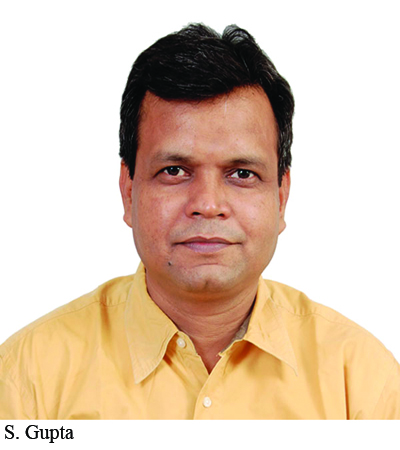 “Don’t ask silly questions”, “don’t try to be smart”, “you are too much”, “don’t eat my head”, “don’t question elders”, “just do what you’re told”, “you are like a question mark”. Drawing from memory, these are examples of dismissive statements which are commonplace in school classrooms. In India’s 1.30 million schools, questions are an irritant and unwelcome. Right from infancy children are taught to be seen and not heard, to fall in line to earn praise, to conform and not invite trouble by suggesting alternatives, disagreeing or debating.
“Don’t ask silly questions”, “don’t try to be smart”, “you are too much”, “don’t eat my head”, “don’t question elders”, “just do what you’re told”, “you are like a question mark”. Drawing from memory, these are examples of dismissive statements which are commonplace in school classrooms. In India’s 1.30 million schools, questions are an irritant and unwelcome. Right from infancy children are taught to be seen and not heard, to fall in line to earn praise, to conform and not invite trouble by suggesting alternatives, disagreeing or debating.
However it is pertinent to note that intolerance of inquisitive children in India’s classrooms and living rooms is a relatively recent phenomenon. In ancient India there was a culture of rewarding questions. In the learned sage Valmiki’s epic Ramayana, when the young Ram asks his parents whether he can play with the moon, they neither ridicule nor scold him. On the contrary, they indulge him by taking the trouble to compose a song.
Likewise in the Mahabharata when little Krishna asks his mother why Radha is of light complexion and he is dark, she provides a patient explanation. Indeed, in this context, it is apposite to highlight that the Bhagavad Gita, the other great epic of ancient India, is the outcome of a question posed by the warrior prince Arjuna to Krishna, his charioteer and philosopher. On the eve of the decisive battle between the Pandavas and Kauravas, depressed by thoughts of the great slaughter which was imminent, he asks Krishna why he shouldn’t call off the war of the cousins. Krishna’s elaborate reply on the need for all righteous men to honestly and fearlessly discharge their duty regardless of outcome, is the core of the philosophic treatise that is the Bhagavad Gita.
In short, the tradition of shastrath (debate) was well-entrenched and respected in ancient India with children encouraged to ask questions to develop their minds. The break with this gurukul tradition came during British rule spanning almost two centuries (1757-1947), and particularly after Lord Macaulay’s famous minute of 1835, which super-imposed the British school education system upon the subcontinent. In the process “the beautiful tree’’ which was the organic gurukul system of education was destroyed, as graphically recounted by Dr. James Tooley in his excellent book The Beautiful Tree (2009).
Children are naturally curious and like to experience and explore. The value of inquisitiveness was brought home to me recently by my daughter who is in senior kindergarten. When she visited my office, I observed that she was touching displays and other objects in the room, examining them before putting them back where they belonged. On our way home, I asked her why she had been ‘disturbing’ objects in the office. “I was checking which objects were smooth and which were rough to better understand what we were taught in class yesterday,” she said.
Despite the straightforward logic of experiential learning, 228 million children who are in schools across the country at the start of every academic year, are drilled and skilled to reproduce word-to-word answers. The great majority of teachers expect them to reproduce passages which generates stress and hinders learning with children engaging in back calculations to get the “right’’ answers. This dominant pedagogy urgently needs review and rejection. Instead, children should be encouraged to produce their own unique answers by way of poetry, prose, collages, drawings, painting or any other form with which they are comfortable. Questioning implies thinking and reasoning — inherent skills that education should develop.
Encouraging children to ask questions apart, it’s equally important for teachers to pose questions to them. In his book Children’s Thinking (1956), educationist David Russel highlights how questioning children stimulates creativity, generates ideas, processes, and often produces solutions for the betterment of human existence. Therefore it’s not an exaggeration to say that questions are the mother of all discoveries. The world’s greatest intellectual and scientific discoveries — the law of gravity, invention of electricity, desktops, aeroplanes, the Raman effect — started with one question.
In his book Taxonomy of Educational Objectives (1956), educationist/philosopher Benjamin Bloom listed six levels of thinking which can be stimulated by appropriate questioning — knowledge, comprehension, applications, analysis, synthesis, and evaluation. “If you want to encourage young people to become scientists, it is not how much they can retain but how much they can explore. It is how you ask the next question. I can look up anything, but I cannot take it to the next level without pushing and exploring. And that is what I want young people to learn to do. I want them to never stop asking questions,” wrote educationist Tony Wagner in The Global Achievement Gap (2010).
Therefore my advice to teachers and parents (who are teachers at home) is to never discourage questions. This doesn’t mean teachers/parents need to instantly produce answers. But through attentive listening and seeking answers — even jointly with children — we can discover the joys of learning not only in our students, but in ourselves as well.
Also Read: Successful foundational learning model
(Dr. Shailendra Gupta is principal and registrar of Calorx Teachers’ University, Ahmedabad)























